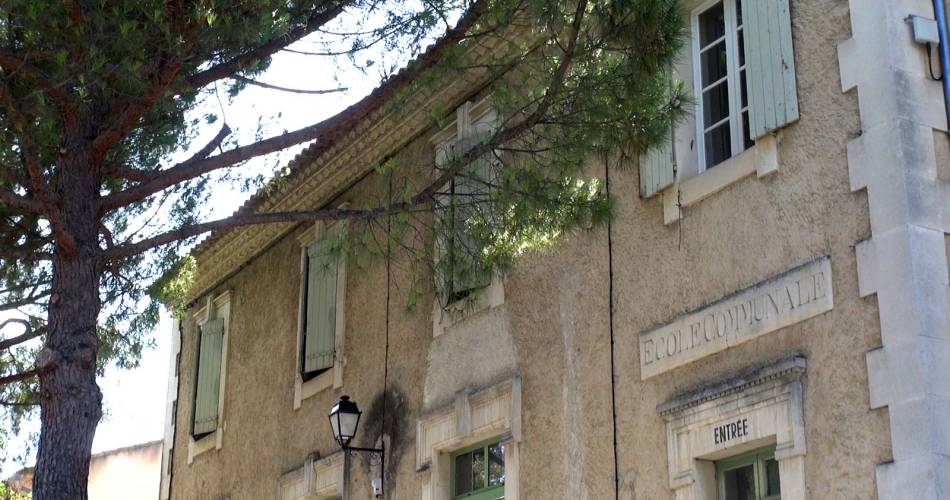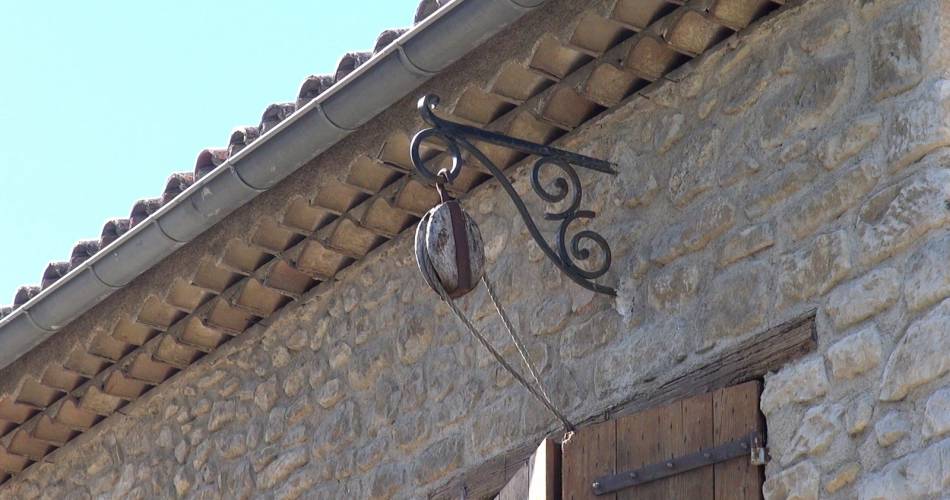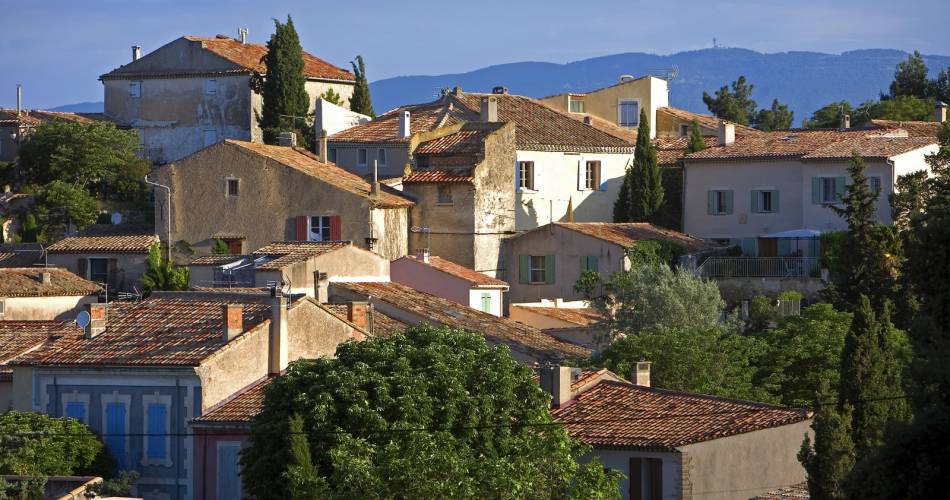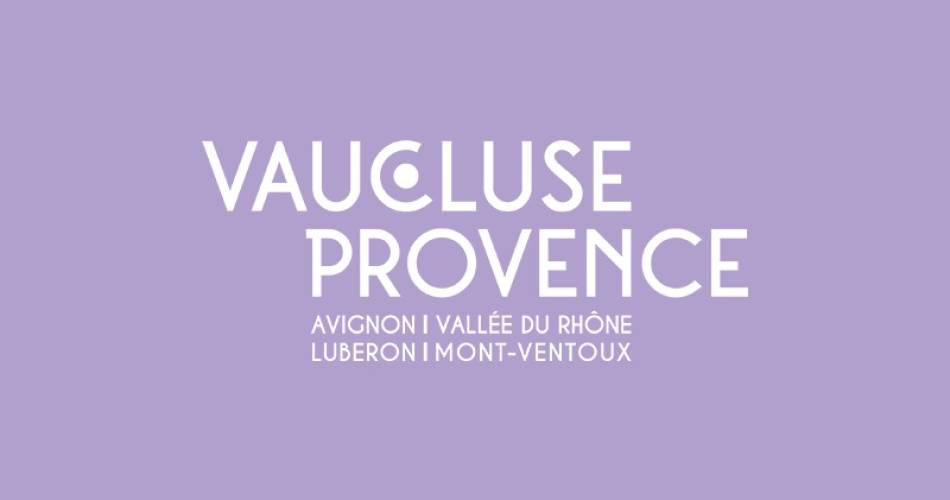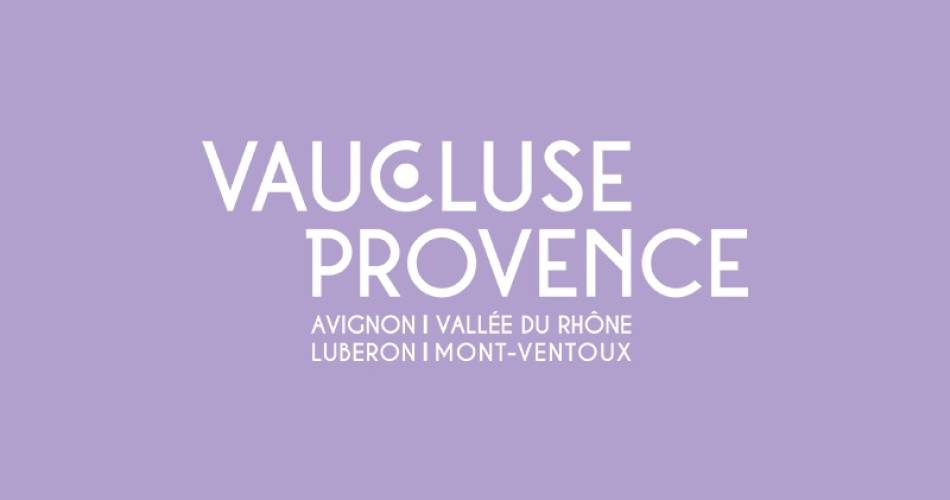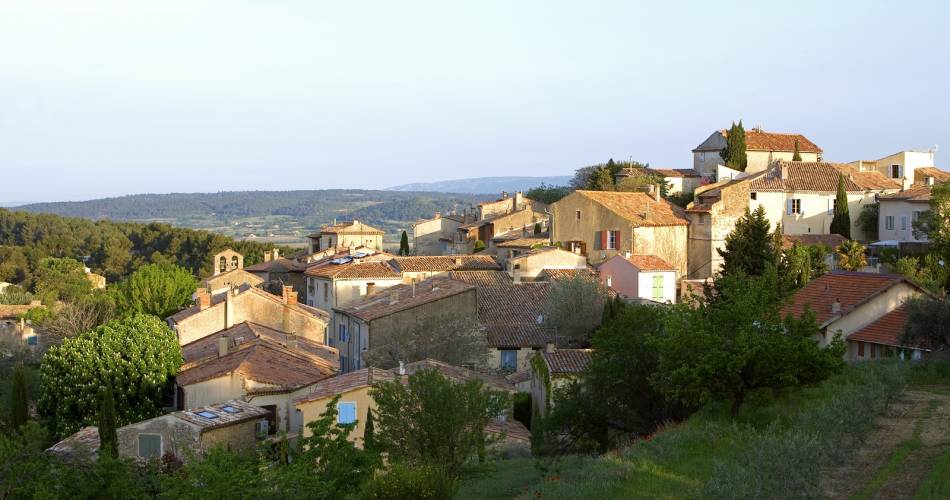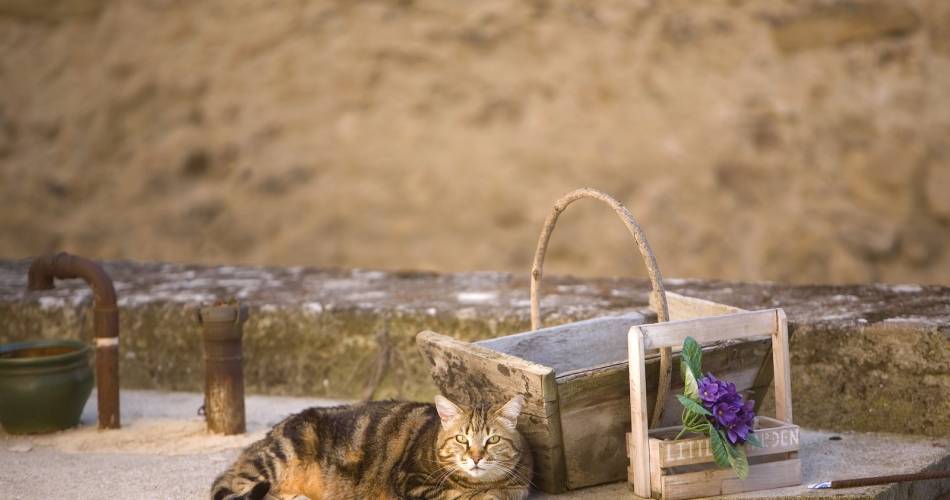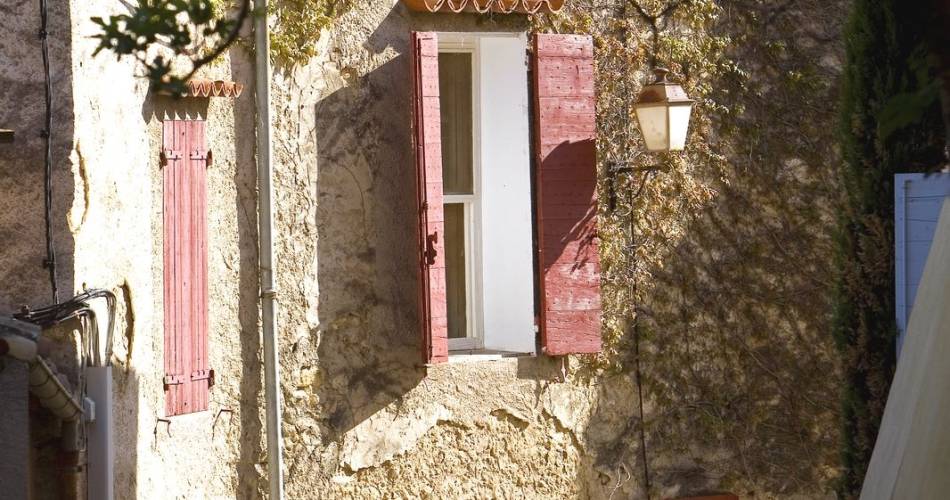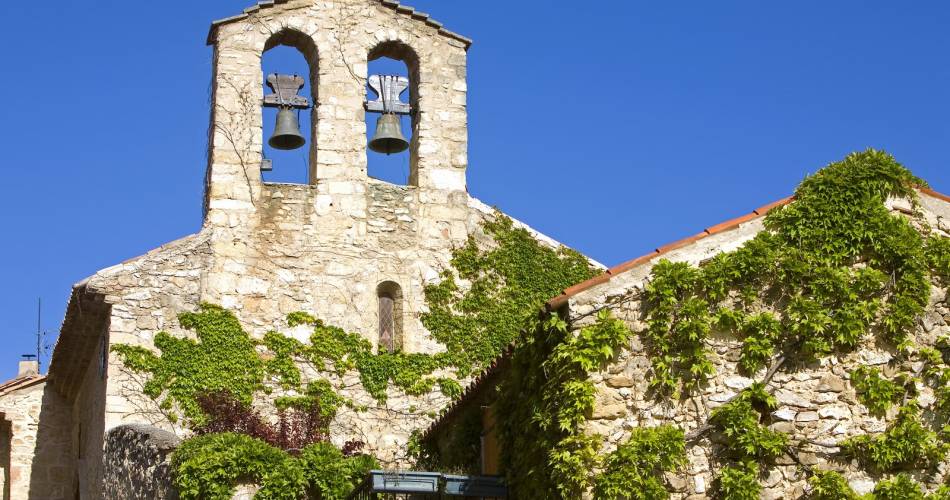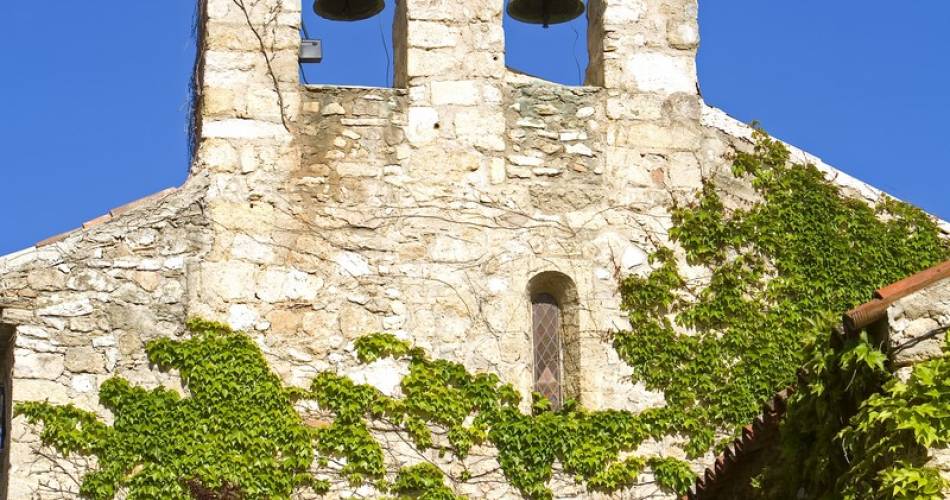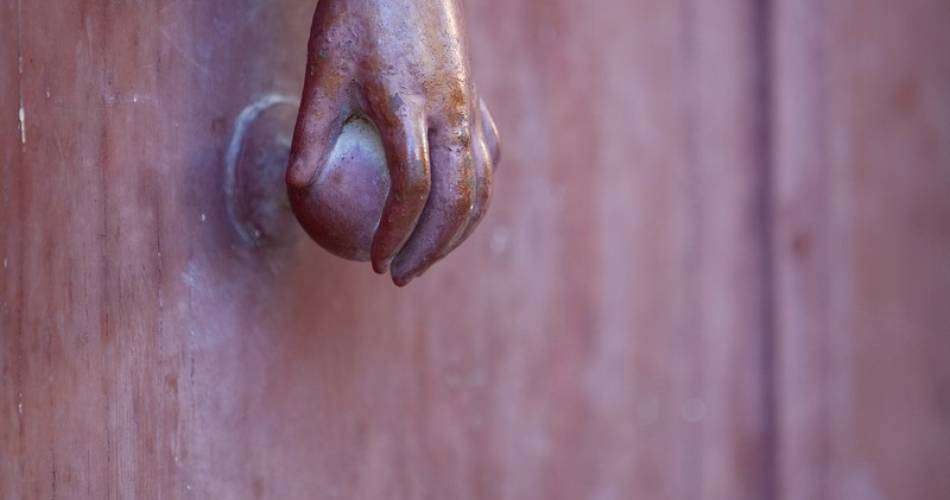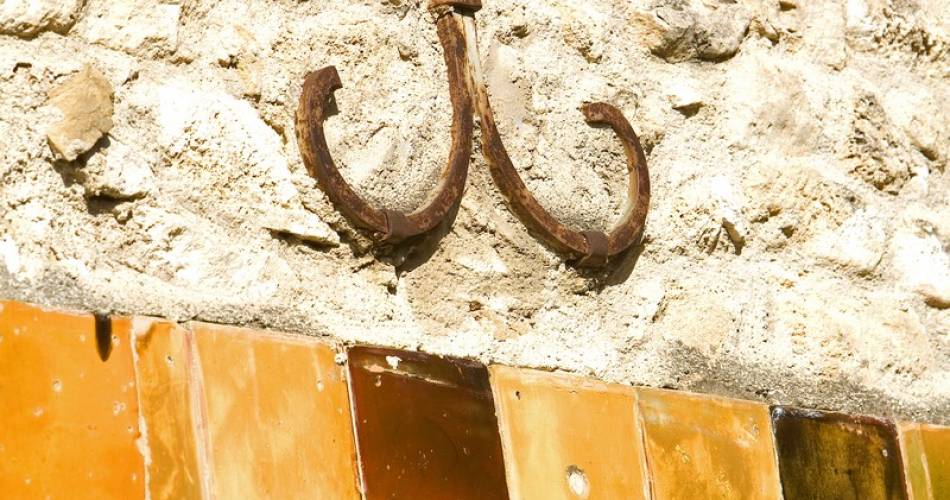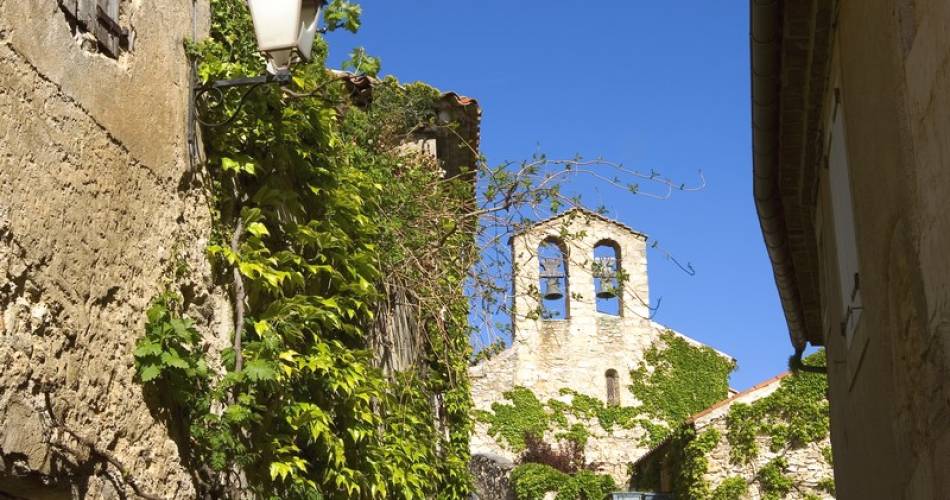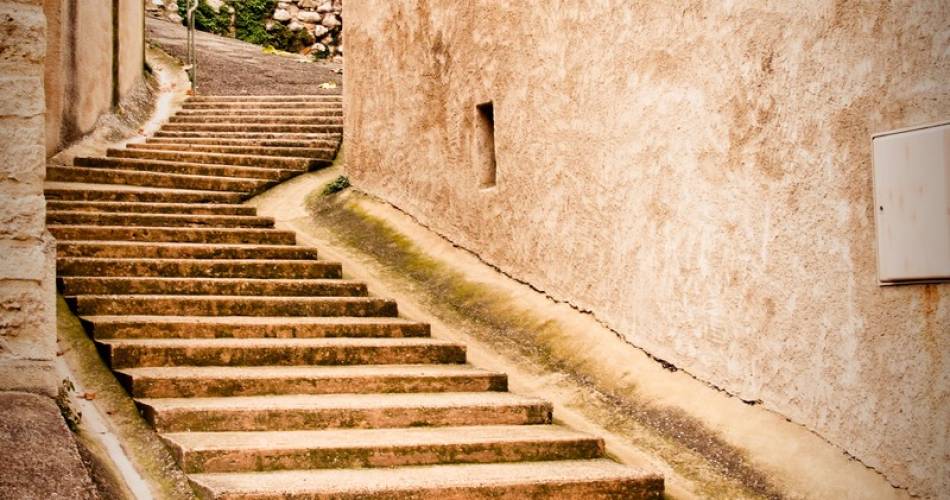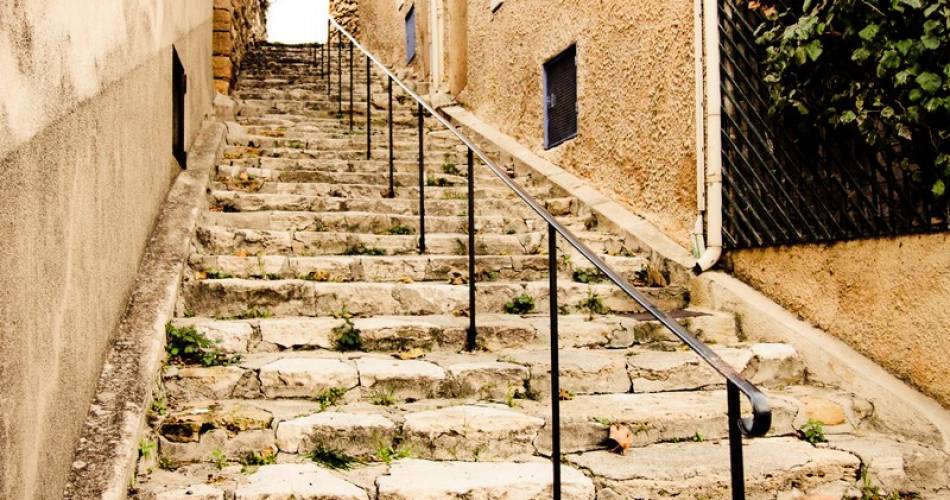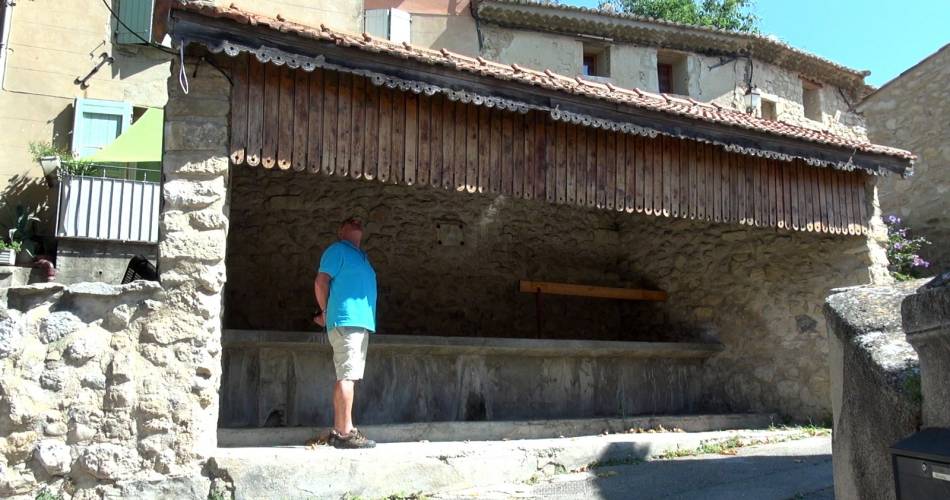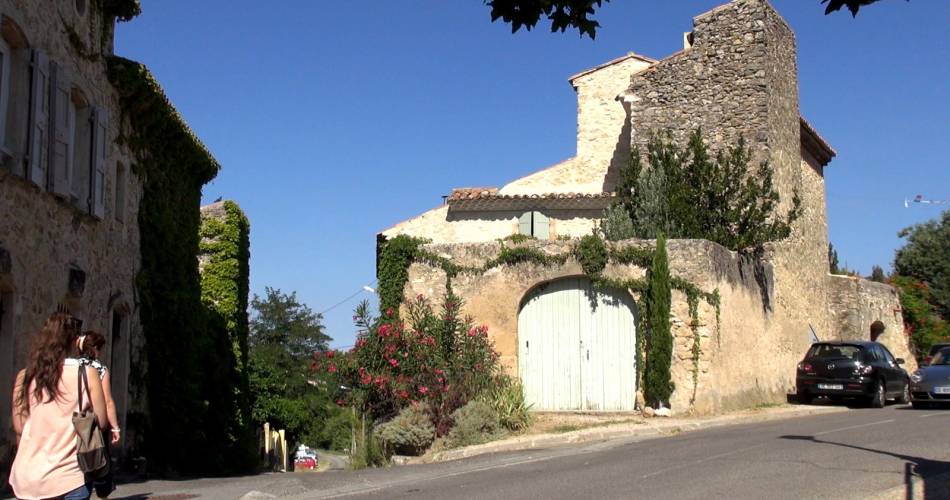Places and monuments you must not miss.
- The chapel Saint Julien
- The Church Notre Dame de Bonne Aventure (XIIIe s.)
- The fountains
GUIDED TOUR
1. Street « Les Ferrages »
« Ferrages » is the provencal word for « wet ground ».
Indeed when this village was created i twas limited to the higher part and the wastewater flowed out down the village, which made the lower part a wet ground.
This street used to be a major path (until the construction of the segondary road D973). The horses could rest in barn that was situated on the site of the current city hall.
Follow Ferrages street in the dircection of La Tour d’Aigues
2. Pulley
On the left hand side you can notice, looking up, an old pulley that reveals the existence of a former barn.
Go straight as far as the old building at the corner of the street
3. Former silk farm
In Provence a silk farm is called a « magnanerie » because of the « magnan » (worm in provençal) Silk used to be the main financial ressource of the village during the 18th century but it had to stop at the 19th century because of the worm disease.
Nowadays it’s a private building, owned by personal.
Take the way up, on your right (Rue de l’Eglise)
4. Entrée du village
When the first inhabitants settled in this area thez were very poor and used little stones, cheaper, to build their houses and covered them with filler (for heat insulation). So, coated houses wit little stones are typical wether houses with big and beautiful stones are recent or restored.
Keep going up the street (rue de l’église)
5. Church « Notre Dame de Bonne Aventure »
Dating back to the 13th century (1240-1250) there is not much windows and the few windows are very small. It shows once more that the village was poor, the stones used for the construction were small and so the building was too fragile to make huge openings.
Inside the monument you find several statues and paintings.
Keep going up and go on your left, on the square (place du barri)
6. Square « Place du Barri »
« Barri » means « big wall » in provençal. When you go at the square end, on the left, you see that big wall.
This place offers a beautiful point of view.
7. Typical landscape
At the beginning vine wasn’t the main agricultural crop of the village. Indeed, there used to be more almond trees and olive trees. However the olive trees were very fragile and the olive trees very expensive sot hey decided to plant vine. The vine is very strong, grows in poor floors and has very good yield. Therefore it became almost a monoculture, even more thanks to the creation of the “AOC Côtes du Luberon » (wine quality label) in 1988.
- The return of the olive trees
Nowadays there is a huge competition on wine market, notably from foreign countries, and the « AOC » is a bit forgotten because people look for more « simple » wines.
Therefore, La Bastidonne decided to reintroduce olive trees and also produce AOC olive oil that is solda t a very interesting price.
* Today there are more olive trees than inhabitants in the town !
- Exceptional almond tree
Concerning almond trees only a few were preserved to save the exceptional genetics of the almonds of La Bastidonne.
Effectively at the time when almond trees were numerous even the confectioners from aix used to put order for these almonds of such a good quality.
Take out of the square and stop in front of the first street on your left.
8. Street of the castle (rue du château)
At the top of the stairs there used to be a building named « la Bastide de Savaric ». It was the house of the Savaric’s family, first settlers of the town, who gave their name to the village.
The name evolved through times ad became « La Bastidonne » in 1790.
9. The wash house
As far as we know it has no construction date. The wash house is sheltered by a roof and is formed of two ponds. It was used for washing linen and providing water for household chores.
Take the street « Grand Rue »
10. Grand Rue
Take the opportunity of striding along this street to look around you. On the right you can see some “trompe l’oeil” (windows painted on the walls). You’ll also catch sight of small doors, they were used to access to the basement of the houses…
Be aware of the different kinds of architecture, showing the evolution of the village.
You reached the end of this discovering !
See less
